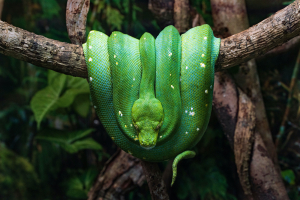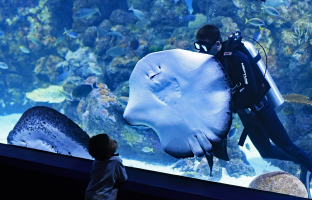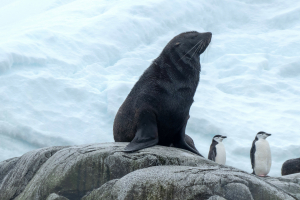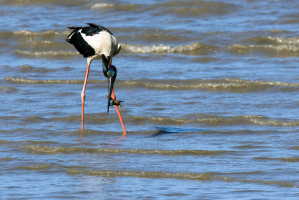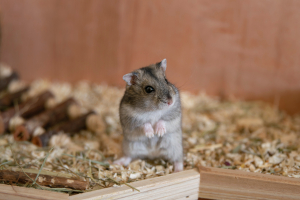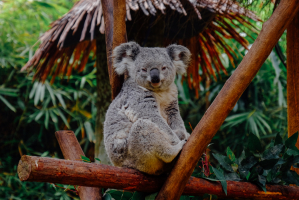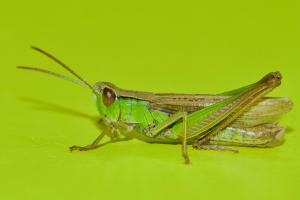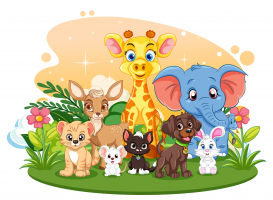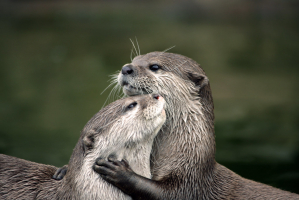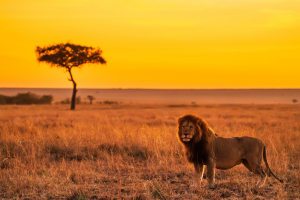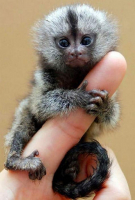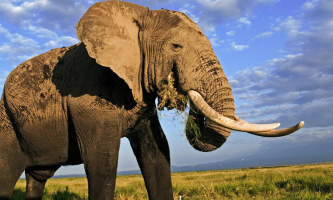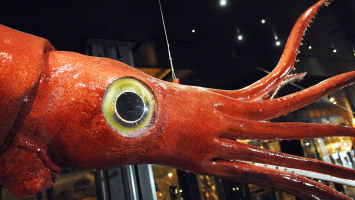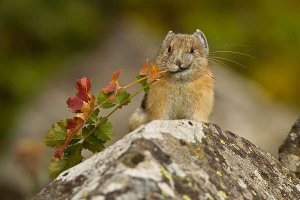Top 15 Animals That Start With Q
The journey through the Q-universe will surely be an adventure. We'll learn about the unique homes, habits, and threats these remarkable creatures face. Are ... read more...you ready to meet the most quizzical, quirky, and downright Q-mazing animals on the planet? Let's explore.
-
Quails are like the little ninjas of the bird world. These feathered friends are small and speedy, zipping around fields and forests with a burst of brown and buff feathers. They're not much bigger than a robin, but they pack a lot of personality into their tiny bodies.
Quails are like globetrotters, living all over the world! From the sunny fields of Europe to the dusty plains of Africa, you might spot a quail covey (a group of quails) scurrying around. They like to hang out in grassy areas with some cover, like bushes or rocks, to hide from sneaky predators. You might catch them running swiftly through grassy areas, their plump bodies moving with surprising speed.
These little guys are seed specialists. They love munching on tiny seeds and grains, pecking away with their sharp beaks. They'll also snack on insects and juicy berries, keeping their tummies happy and their energy levels high.
Quails are chill when it comes to family life. With their fancy patterned feathers, the males do a little happy dance to attract the ladies. Once paired up, the mama quail builds a cozy nest on the ground, hidden amongst the grass. She lays pretty eggs; both parents keep them warm and safe until fluffy chicks hatch.
One exciting thing about quails is their distinct calls. Male quails are known for their "bob-white" calls, which sound like they're saying their name. It's like they're introducing themselves to the world. It's how they stay in touch with each other, especially when they're foraging for food. Also, they're great at camouflage. Their brown and buff feathers blend perfectly with the ground, making them practically invisible to predators.
Quails are down-to-earth, ground-loving birds that add a touch of simplicity to fields and gardens. With their cute plumes, swift movements, and social gatherings, they bring charm to the avian world, reminding us that even the smallest birds play an essential role in the grand tapestry of nature.
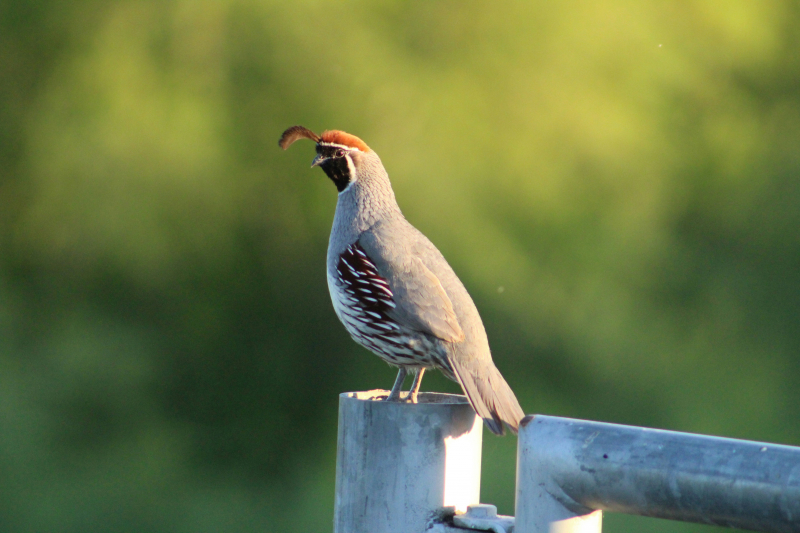
Photo by Jake Brock on Unsplash: https://unsplash.com/photos/blue-and-white-bird-on-blue-wooden-fence-during-daytime-Wja_JBF5kJQ Video by @petersteuart8600 -
Imagine a tiny kangaroo with the biggest, goofiest grin ever. That's the quokka, the internet's favorite marsupial and the undisputed champion of "most likely to make you say 'awww.' They're like the cheerful residents of Rottnest Island in Australia, often dubbed the "happiest animals on Earth." These guys are also fascinating little creatures with a surprising story to tell.
Quokkas are not shy about their grins; they seem to be perpetually smiling. Their round faces and upturned mouths make them look like they're in a perpetual state of joy. They've mastered the art of spreading happiness wherever they go.
What makes them so happy? There's no one answer, but quokkas have a chill life. They don't have many predators, have plenty of food, and spend their days lounging in the sunshine. They're super social creatures, playing with each other and cuddling up in big groups. It's hard not to be happy when surrounded by friends and sunshine!
Quokkas enjoy a vegetarian diet. Their meals consist of grasses, leaves, and other plant goodies. It's like they're living a laid-back, plant-based lifestyle, munching on greens and enjoying the sunny Australian weather. Also, they're pretty good swimmers! They use their strong legs to paddle around the ocean, looking for tasty seaweed snacks.
People love quokkas, and not just because of their adorable smiles. They've become famous for their photogenic nature, with tourists and locals snapping selfies with these little bundles of joy. It's like the quokka selfie has become a rite of passage for visitors to Rottnest Island.
In a nutshell, quokkas are the perpetually happy marsupials that have captured the hearts of many. Their adorable smiles, social nature, and bouncy movements bring a dose of sunshine to the wildlife scene, making them the happiest animals on Rottnest Island and perhaps in the entire world.
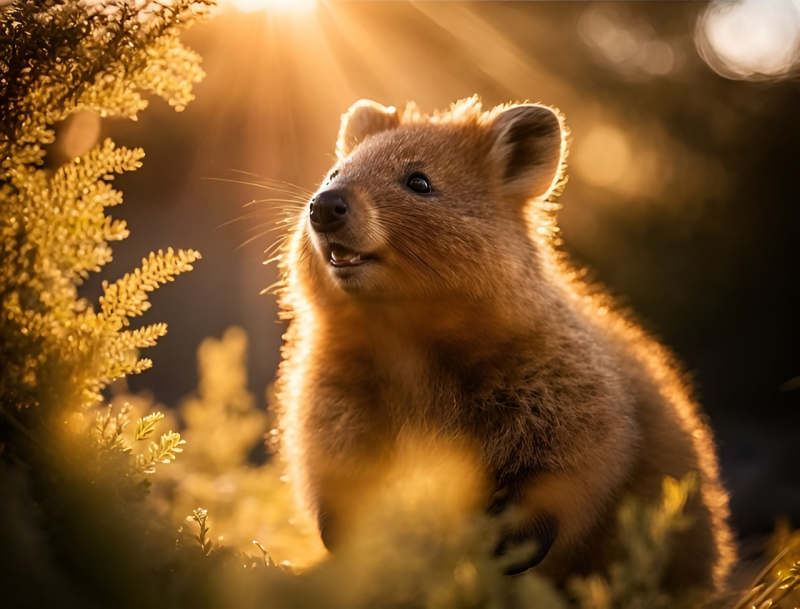
Image by Katy_Heejin from Pixabay: https://pixabay.com/illustrations/quokka-fluffy-adorable-endearing-7843574/ Video by @animalscoops -
Meet the quolls, the coolest carnivorous marsupials you'll ever encounter. These stealthy hunters are like the ninjas of the Australian bush, prowling the night with sharp teeth and even stronger instincts. But beneath their fierce exteriors, they're also surprisingly adorable.
Quolls come in six flavors, and you can find them chilling in different parts of Australia and New Guinea. The Eastern Quoll rocks the mainland scene, while the Spotted-tail Quoll prefers the cooler Tasmanian vibes. The Northern Quoll hangs out in the tropical rainforests, and the Western Quoll is a champion of the dry outback.
Quolls are not show-offs; they keep a low profile during the day and become active at night. It's like they've got a nightlife agenda, prowling around searching for food when the sun goes down. They prefer wandering on their own rather than forming packs or groups. They enjoy the solo life, exploring the bush and navigating through the undergrowth independently.
One exciting thing about quolls is their distinctive spotted fur. Each quoll has its unique pattern of spots, making them easily identifiable. It's like they've got their own fashionable coat that adds a touch of style to the Australian wilderness. When it's time for family matters, quolls are good parents. The females have a pouch to carry their tiny joeys and are attentive caregivers. They've mastered the art of being fierce hunters and nurturing parents.
Quolls can climb trees like champs, thanks to their sharp claws and flexible bodies. They're also immune to the venom of some snakes, making them even more badass. And get this: they have a special gland that releases a stinky smell when they feel threatened. Talk about a natural defense system!
In the nutshell, quolls are the spotty, nocturnal hunters that add a dash of wild charm to Australia and New Guinea. Their distinct appearance, versatile diets, and solitary lifestyle bring a touch of mystery to the marsupial world, reminding us of the diverse and unique wildlife in the southern hemisphere.
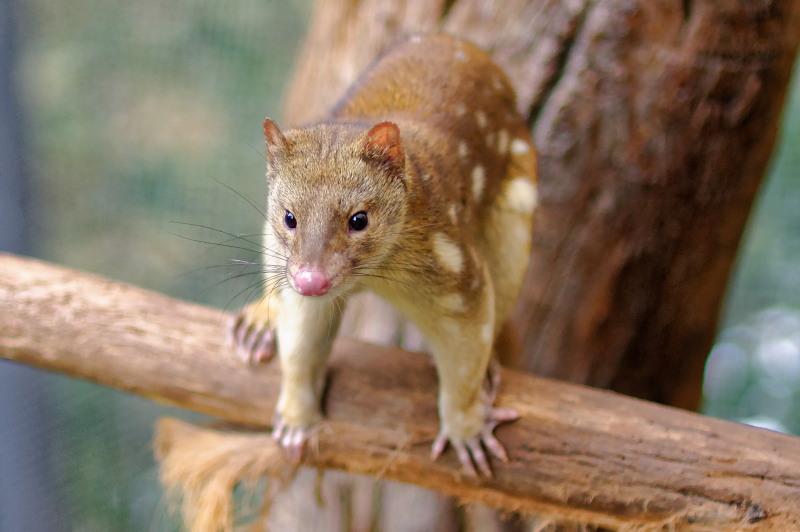
Photo by https://commons.wikimedia.org/wiki/File:Spotted_Tail_Quoll_2011.jpg Video by @animalogic -
Imagine a bird with iridescent green feathers, a red belly, and long, streaming tail feathers – a quetzal. They're like the fashionistas of the avian world, showcasing a stunning blend of colors that make them stand out in the lush, green canopies.
Think misty mountains cloaked in green – that's the quetzal's playground! They chill in the cloud forests of Central America, from Mexico to Panama. These high-altitude hideaways are perfect for their love of cool and damp air. They've found the ideal runway for flaunting their colorful plumage.
These guys are fruit experts! They love slurping up berries, avocados, and other juicy treats. But they're not just sugar fiends; they also snack on insects and lizards, keeping their diets nice and balanced.
With their long tail feathers trailing behind them, they move gracefully through the trees. It's like they're putting on an aerial show, fluttering about with elegance. They have soft, melodious calls that resonate through the forests. They're the songbirds creating a soothing ambiance in their tropical homes.
One remarkable feature of quetzals is their connection to ancient cultures. These birds were considered sacred by ancient Mayan and Aztec cultures, symbolizing freedom and the connection between heaven and earth. Even today, the quetzal is the national bird of Guatemala, a symbol of their lush rainforests and rich heritage. It's like they've been cultural icons for centuries, symbolizing freedom and beauty.
In a nutshell, quetzals are the feathered gems of Central American cloud forests. With their striking colors, graceful flight, and cultural significance, they add a touch of magic to the treetops, reminding us of the breathtaking diversity found in the avian kingdom.
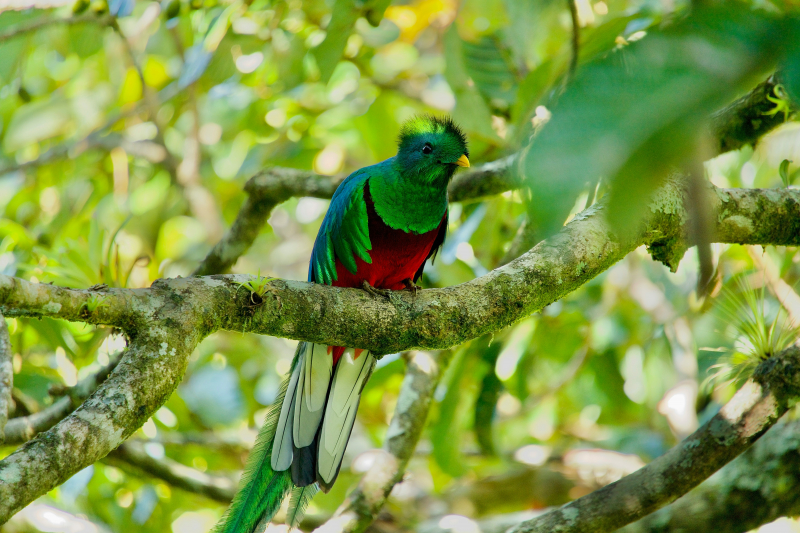
Photo by Aleksandar Popovski on Unsplash: https://unsplash.com/photos/a-green-and-red-bird-sitting-on-a-tree-branch-UHxY03ITZEw Video by @JudyLehmbergEpicNature -
Let's spread our wings into the world of butterflies and explore Queen Alexandra's Birdwing. This majestic and enormous butterfly graces the tropical rainforests of Papua New Guinea.
Imagine a butterfly with wings so large that they can span up to a foot across, colored in vibrant green, black, and yellow hues – that's the Queen Alexandra's Birdwing. They're like the royalty of the butterfly world, flaunting their impressive wingspan in the dense and lush rainforest. Queen Alexandra's Birdwing calls the lush rainforests of Papua New Guinea home. Think towering trees, buzzing insects, and enough humidity. It's the perfect playground for a butterfly that needs all the space it can get.
These butterflies are not the petite, delicate ones you might often see in gardens. They're giants, with the females being larger than the males. Their wingspan can reach a whopping 11 inches, making them the biggest butterfly in the world! Captivating anyone lucky enough to witness their majestic flight.
One fascinating thing about these butterflies is their unique coloring. The males sport bright yellow wings with striking black borders and greenish bodies, while the females have more subdued colors. It's like they're the living canvases of the rainforest, blending in with the vibrant flora surrounding them.
These butterflies have an essential role in the ecosystem; they contribute to pollination as they flutter from flower to flower in search of nectar. It's like they're the airborne gardeners, playing a crucial part in maintaining the rich biodiversity of their rainforest habitat. Sadly, habitat loss due to logging and deforestation threatens these magnificent creatures. Their dependence on specific trees for food and breeding makes them particularly vulnerable.
In a nutshell, Queen Alexandra's Birdwing is the gentle giant of the butterfly world, adorning the tropical rainforests with its impressive wings and vibrant colors. Their majestic presence and ecological significance remind us of the wonders that flutter amidst the lush green canopies of Papua New Guinea.
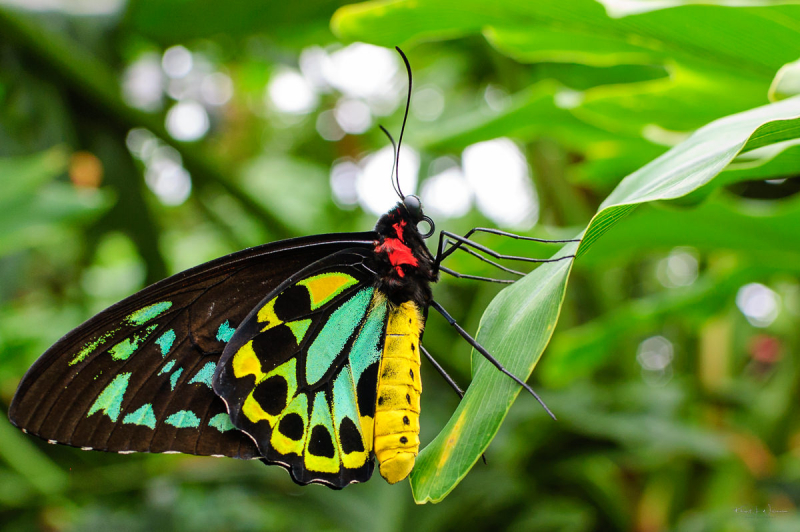
Photo by https://islandinthenet.com/family-vacation-in-niagara-falls-canada/ Video by @knownfacts1 -
Get ready for a feathered friend who's both cheeky and charming! Meet the Quaker Parrot, a small green bundle of energy with a personality as big as its squawk. These little chatterboxes aren't just cute – they're also brilliant and skilled mimics, making them hilarious companions and impressive performers.
Quaker Parrots live in South America, chilling in the lush rainforests from Bolivia to Argentina. Picture vibrant green leaves, chattering monkeys, and the sweet smell of tropical flowers – that's their playground. They love hopping through the branches, snacking on berries, and screeching loudly enough to wake up the monkeys.
What's on the Quaker Parrot menu? These guys are fruit experts! They love slurping berries, figs, and other juicy treats, using their strong beaks to crack open even the toughest fruits. They'll also munch on seeds, nuts, and occasional insects to keep their tummies happy.
These clever birds are amazing mimickers! They can perfectly copy human speech, whistles, and bird calls, making them hilarious companions and talented performers. Imagine having a tiny parrot who can shout "Good morning!" or ask for a cookie in perfect human voice – it's enough to make you laugh out loud!
Quaker Parrots have become popular pets due to their friendly nature and adaptability to domestic environments. They form strong bonds with their human companions, making them cherished members of many households. It's like they've brought a burst of color and joy into the lives of those lucky enough to share their homes.
The Quaker Parrot is a lively and friendly companion, adding color and charm to the bird enthusiast's world. They have become beloved feathered friends with their intelligence, distinctive appearance, and friendly disposition. And creating vibrant connections with their parrot peers and the humans fortunate enough to be in their lively company.
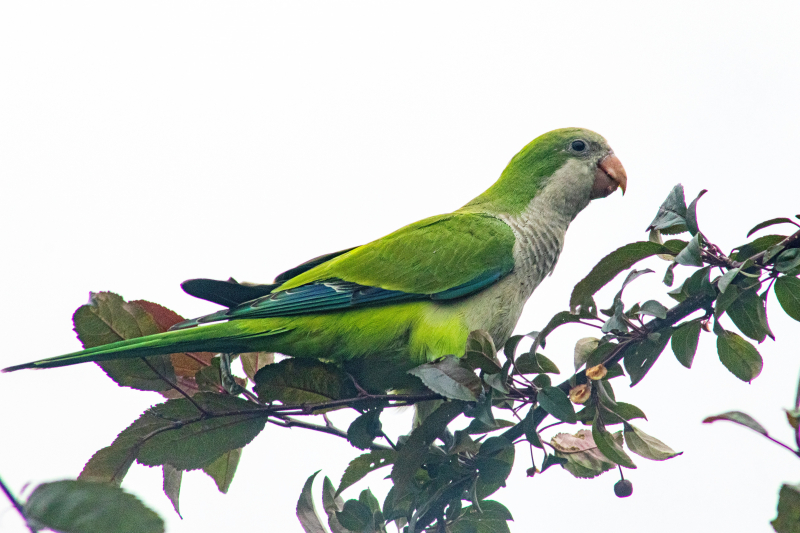
Photo by J Yeo on Unsplash: https://unsplash.com/photos/green-and-gray-bird-on-tree-branch-Qz8UFkOYXag Video by @GreatBigStory -
Imagine a horse with a compact build, powerful hindquarters, and a friendly expression – that's the Quarter Horse. They're like the all-around athletes of the horse world, excelling in various equestrian activities.
Quarter Horses call North America home, with their roots firmly planted in the ranches and plains of the United States and Canada. Think wide-open spaces, dusty trails, and a good, old-fashioned Western vibe. These horses were practically made for this kind of life, built for tough work and long days under the sun.
Quarter Horses are not the tallest in the stable; they usually stand between 14 and 16 hands high. It's like they've found the perfect height to combine strength and agility, making them well-suited for various tasks. They're known for their incredible speed in short distances. Their name comes from their ability to outpace other horse breeds in quarter-mile races.
These horses excel in various disciplines, from racing and rodeo events to ranch work and pleasure riding. Their intelligence, athleticism, and calm demeanor make them perfect partners for riders of all ages and skill levels. They've become the versatile Swiss Army knives of the horse world, ready to tackle any task with enthusiasm.
Quarter Horses have a rich history deeply intertwined with American culture, playing a significant role in the development of the West. They were the trusted partners of cowboys and ranchers, helping shape the frontier. They've become living symbols of the American spirit and the untamed landscapes they once navigated.
The Quarter Horse is the down-to-earth, do-it-all horse with a friendly personality and a knack for speed. With their versatility and distinctive coats, Quarter Horses are cherished companions and performers in the equestrian world. They embody the spirit of the American West, carrying a rich history and playing significant roles in various disciplines.
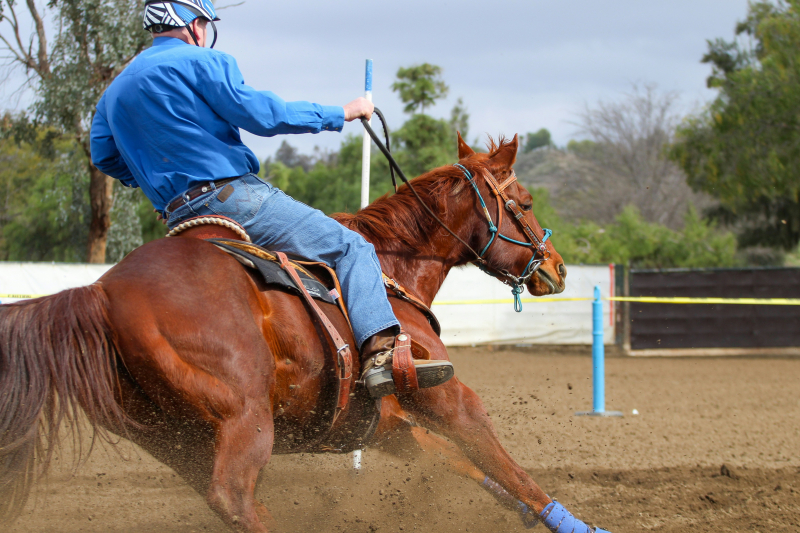
Photo by Christine Benton on Unsplash: https://unsplash.com/photos/man-in-blue-jacket-riding-brown-horse-during-daytime-TU_m6CSPenM Video by @naturepbs -
Let's fly into the world of queleas – those small birds that gather in enormous flocks, creating mesmerizing spectacles across the skies of sub-Saharan Africa. Imagine a little bird, not much larger than a sparrow, with a brownish plumage – a quelea. They're like the avian flash mobs of the African savannah, often numbering in the thousands or even millions.
Queleas are like the rock stars of the African savanna, with a range that stretches across sub-Saharan Africa. From the sun-drenched plains of Kenya to the lush grasslands of South Africa, these birds are at home wherever there's plenty of food and space to gather.
These feathered friends are seed specialists. They have short, sharp beaks perfect for cracking open tiny seeds, and they'll happily munch on just about anything green and crunchy. Grasses, grains, even fruits and buds – no snack is safe from a hungry Quelea flock. When they take flight, it's a breathtaking sight, with the sky transforming into a swirling mass of wings.
Queleas are all about the big, raucous gatherings, unlike some birds who prefer quiet solitude. They build massive communal nests in trees or bushes, with hundreds or even thousands of pairs raising their chicks simultaneously.
One remarkable thing about queleas is their incredible ability to form enormous swarms during their annual migrations. These swarms can be so vast that they're visible from space. It's like they've mastered the art of collective movement, turning the sky into a living canvas of motion. Those massive Quelea flocks can be a real headache for farmers. They can devour entire harvests in a few days when they descend on fields like a feathered locust swarm. This can have devastating consequences for local communities who rely on those crops for survival.
Queleas are the social birds that paint the African skies with synchronized flights and lively conversations. Their massive flocks, seamless coordination, and breathtaking aerial displays remind us of the wonders of nature and the intricate connections between the avian world and the landscapes they call home.
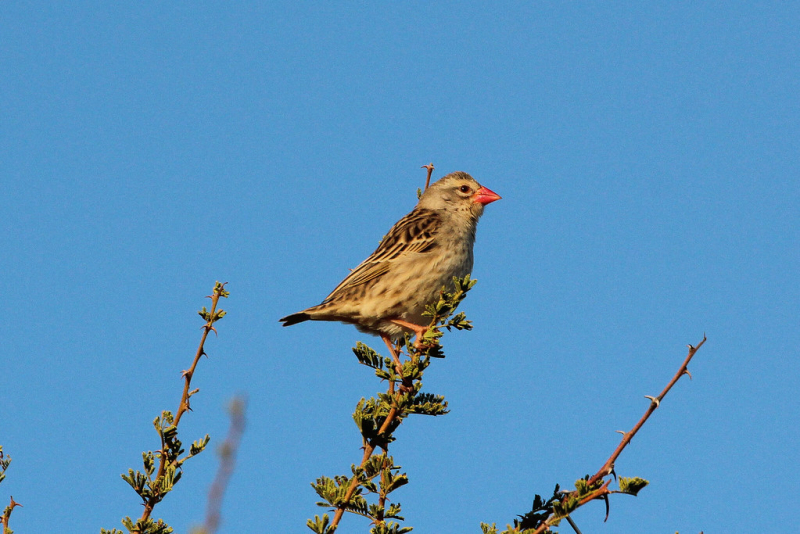
Photo by https://www.flickr.com/photos/arthur_chapman/29962718038 Video by @shrathome-sanparkshonorary3651 -
Let's delve into the world of the Qinling panda – a unique subspecies of the giant panda found in central China's Qinling Mountains, bringing its charm to the iconic black and white bear. This special sub-species lives in a secret world of misty mountains and hidden valleys, far from the crowds of its more famous cousins.
What's on the Qinling panda menu? Bamboo, of course! These black and white bears spend their days munching on these giant grasses, using their strong jaws and sharp teeth to break down the tough stems. But unlike their lowland cousins, Qinling pandas are more versatile eaters. They'll snack on berries, fruits, and even the occasional insect to keep their tummies happy.
One distinctive feature of Qinling pandas is their lighter coloration. While most giant pandas showcase bold black-and-white contrasts, Qinling pandas often have a lighter, brownish color on their bodies. It's like they've donned a more subtle panda wardrobe, blending in with the earthy tones of their mountainous surroundings.
Mama pandas raise their cubs alone in cozy dens hidden among the rocks. They cuddle their fluffy bundles of joy, teach them how to climb trees and find tasty treats, and watch them grow into independent bamboo-munching machines.
Conservation efforts are crucial for the Qinling panda, as their population faces habitat loss and fragmentation threats. Conservation initiatives aim to protect their natural habitats and promote sustainable practices to ensure the survival of these unique pandas. It's like they've become ambassadors for preserving the diverse ecosystems that support their panda way of life.
In a nutshell, the Qinling panda is the subtle yet captivating variation of the iconic giant panda, adding a touch of uniqueness to the mountainous landscapes of central China. With their lighter coloration, bamboo-filled diets, and social interactions, they contribute to the rich tapestry of biodiversity in their native habitats, reminding us of the need to cherish and protect these remarkable creatures.
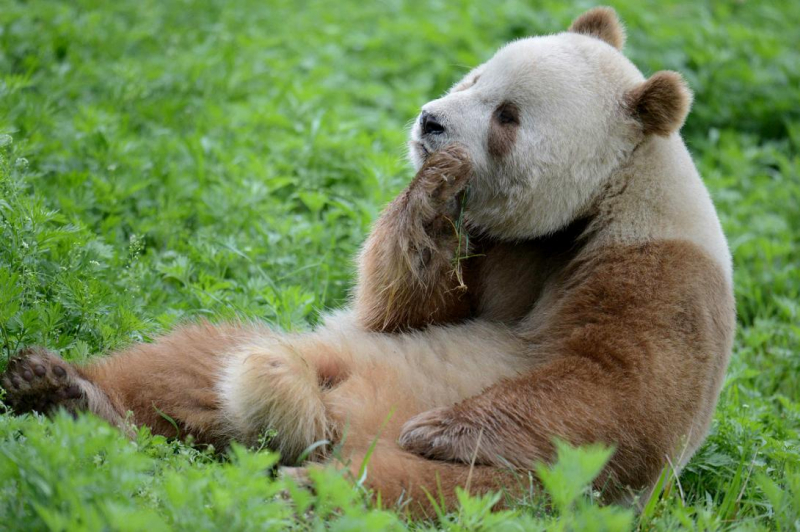
Screenshot of https://www.youtube.com/@wildintuition Video by @wildintuition -
Imagine a massive fish with a robust body and a striking color pattern ranging from pale to dark brown, adorned with distinctive spots – that's the Queensland grouper. They're like the gentle giants of the reef, blending in with the vibrant corals and marine life.
Queensland Groupers call the vibrant coral reefs off the coast of Australia home. Think warm, sun-drenched waters, teeming with colorful fish and teeming with life. They love to hang out in crevices and caves, blending in perfectly with the coral thanks to their fantastic camouflage skills.
These guys are the apex predators of the reef, meaning they're at the top of the food chain. Their diet is as diverse as it is impressive. They'll snack on small fish, crustaceans, and even octopuses. They're like the underwater ninjas of the reef, using their sharp teeth and cunning hunting skills to ambush their prey.
The remarkable thing about Queensland groupers is their ability to change color. They can shift between light and dark shades, adapting to their surroundings. It's like they've mastered the art of camouflage, becoming stealthy hunters in their coral kingdom.
Queensland groupers play a vital role in maintaining the health of coral reefs. As apex predators, they help control the population of smaller fish, preventing overgrazing on the reef's vegetation. It's like they're the guardians of the coral gardens, ensuring a harmonious balance between species.
In a nutshell, the Queensland grouper is the majestic guardian of the coral reefs, contributing to the vibrant underwater ecosystems of the Indo-Pacific. With their impressive size, color-changing abilities, and crucial role in reef dynamics, they remind us of the intricate web of life beneath the ocean's surface and the importance of preserving these marine wonders.
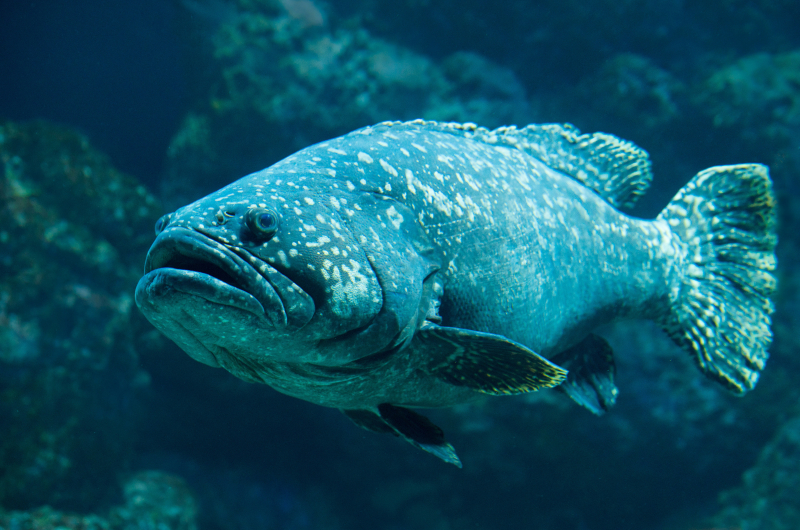
Photo by David Clode on Unsplash: https://unsplash.com/photos/black-fish-swimming-near-corals-iFQE-aCAWPU Video by @NatGeo -
Let's slither into the world of the queen snake – a charming and aquatic serpent found in parts of North America, known for its slender body and preference for freshwater habitats.
Imagine a snake with a sleek and slender physique, sporting dark-colored scales and a distinctive stripe running down its back – that's the queen snake. They're like the aquatic dancers of the serpent world, gracefully moving through freshwater environments.
Queen Snakes love the steamy humidity and lush greenery of Southeast Asian rainforests. From Vietnam to Indonesia, they make their homes amongst the tangled vines and fallen leaves, basking in the dappled sunlight filtering through the canopy. They are excellent swimmers, often found in or near streams and rivers. They've embraced the aquatic lifestyle, gracefully gliding through the water easily.
These slender serpents aren't picky eaters. They'll happily chow down on earthworms, slugs, and other small, squishy creatures they find wriggling in the leaf litter. Their powerful jaws and sharp teeth make them efficient little hunters, even if they don't look like it. It's like they've developed a taste for the freshwater delicacies, using their specialized diet to thrive in the ecosystems they inhabit.
Habitat loss due to deforestation and the illegal pet trade threaten these gentle serpents. Their calm nature and beautiful scales make them targets for poachers. Still, thankfully, conservation efforts are working to protect them and their rainforest homes.
The queen snake is the aquatic gem of North American snake species, gracefully navigating freshwater environments with its slender body and distinctive markings. With their affinity for water, communal habits, and reliance on crayfish, they add a touch of elegance to the diverse tapestry of reptilian life in their native habitats.
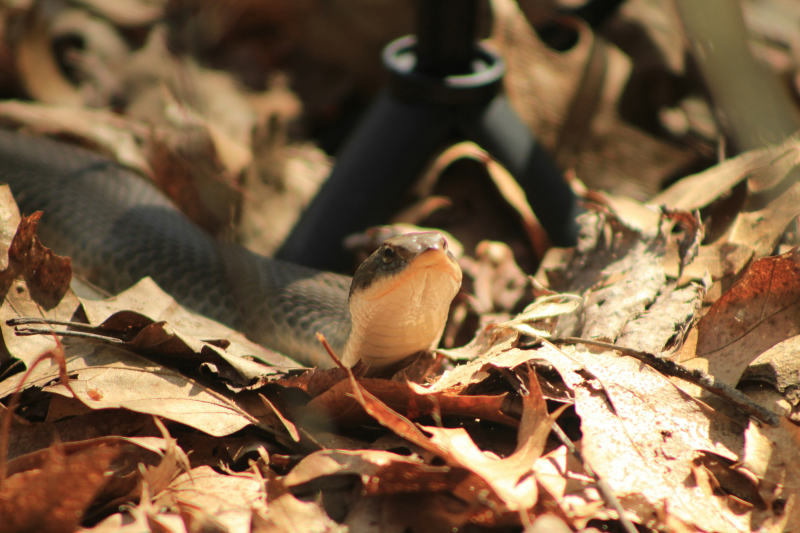
Photo by Adventureontheside.com on Unsplash: https://unsplash.com/photos/black-and-white-snake-on-dried-leaves-mf5EtNqC7NQ Video by @TheWildReportOfficial -
Buckle up, dino-fanatics, because we're about to soar back in time and meet the ultimate flying behemoth: Quetzalcoatlus. This pterosaur makes even a T-Rex look like a pipsqueak! Imagine a winged creature with a wingspan wider than a basketball court – that's Quetzalcoatlus, a prehistoric sky titan. With a neck longer than a giraffe and a head the size of a car, it ruled the Late Cretaceous skies.
Quetzalcoatlus stomped and soared across the prehistoric landscapes of North America, from Texas to Wyoming. Think vast plains, lush forests, and skies teeming with flying reptiles of all shapes and sizes. It was one of the largest flying animals to ever exist, with an estimated wingspan of up to 33 feet. It's like they've taken flight to a new level, dwarfing many other creatures in their airborne domain.
Quetzalcoatlus's enormous beak and long neck were perfectly adapted for snagging fish from rivers and lakes. Imagine skimming the water like a prehistoric pelican, scooping up unsuspecting fish in one giant gulp! They might have even gone after small dinosaurs or scavenged on carrion, making them the ultimate prehistoric cleanup crew.
One fascinating thing about Quetzalcoatlus is its name, inspired by the Aztec god Quetzalcoatl, often depicted as a feathered serpent. It's like they've inherited the legacy of a mythical deity, adding an extra layer of intrigue to their already impressive existence.
While Quetzalcoatlus is long gone, its fossilized remains continue to captivate scientists and enthusiasts, providing valuable insights into the ancient ecosystems they once ruled. It's like they've left behind a prehistoric legacy in the rocks and fossils, allowing us to marvel at the wonders of the past.
Quetzalcoatlus is the colossal champion of the prehistoric skies, showcasing the incredible diversity of life that once soared above our planet. With their massive wingspan, lightweight design, and potential social behaviors, they've become the aerial legends of the Late Cretaceous, leaving us in awe of the ancient world they inhabited.
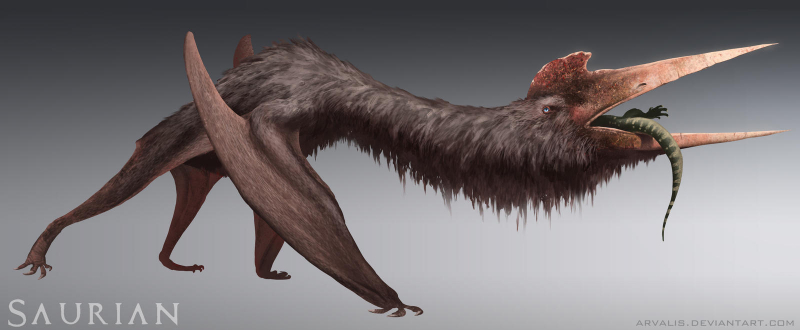
Photo by https://www.deviantart.com/arvalis/art/Saurian-Quetzalcoatlus-503173504 Video by https://www.youtube.com/@WobblyWorks -
Imagine a zebra with a twist – a creature sporting stripes only on its front half, while the back half is a plain, sandy color – that's the quagga. They're like the stylish rebels of the zebra family, showcasing a distinct and fascinating coat pattern.
Quagga lived mainly in the southern grasslands of South Africa, where they munched on tasty grasses and enjoyed the warm sunshine. They were social creatures, living in big herds that roamed the plains for food and water. It's like they've created their own stripey communities, sharing the vast grasslands with other herbivores.
Quagga preferred a leisurely pace as they grazed on grasses. They've mastered taking it easy, strolling through the landscape, and enjoying the South African sunshine. These striped-less zebras lived in stable family groups, with foals sticking close to their mothers for protection and learning the ropes of zebra life. The herd would work together to watch for predators and find the best grazing spots.
Tragically, quaggas became extinct in the late 19th century due to overhunting and habitat loss. The last known quagga, a mare named "Lady," passed away in an Amsterdam zoo in 1883. It's like they've become the ghosts of the African plains, leaving only historical accounts and a few preserved specimens for us to remember them by.
Efforts to revive the quagga have been underway through a breeding program called "Quagga Project," which aims to selectively breed zebras that exhibit quagga-like characteristics. It's like a small glimmer of hope, attempting to bring back a touch of the quagga's unique charm to the modern world.
In a nutshell, the quagga was the one-of-a-kind zebra that graced the grasslands of South Africa with its distinctive appearance. With their partial stripes, social nature, and unfortunate journey to extinction, quaggas have left an indelible mark on the history of the animal kingdom.
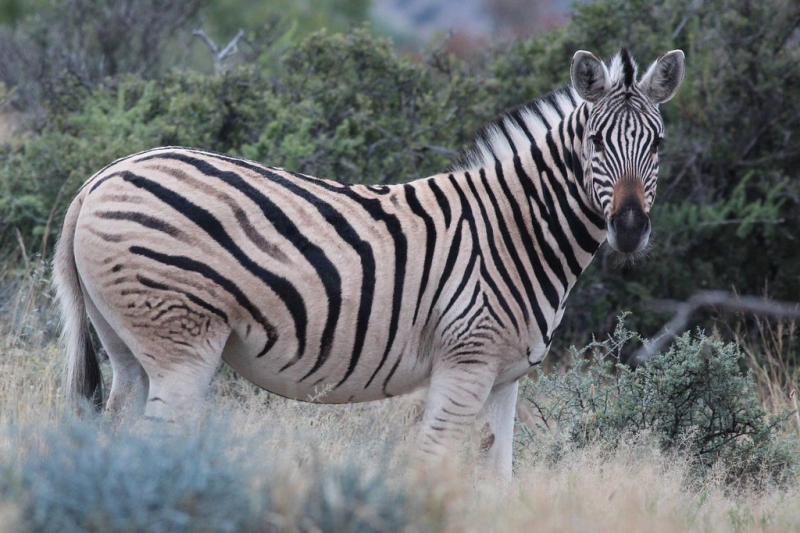
Photo by https://www.flickr.com/photos/arthur_chapman/7601668020 Video by @neoexplains -
Quahogs - these hefty bivalves are like the Dwayne Johnsons of the mollusk world – big, strong, and with a shell that could double as a smartphone case (if smartphones were made of clam shells). They're also pretty tasty, making them stars of chowders, clam bakes, and endless seafood puns.
Quahogs chill along the coasts of North America, from the chilly waters of Canada to the sunny shores of Florida. They like to burrow in sandy or muddy bottoms, where they spend their days filtering food and napping. It's like they've mastered the art of blending in, creating a cozy home within the sand or mud, where they can peacefully filter the surrounding water for their meals.
These guys are filter feeders, sipping plankton and microscopic goodies from the water. They've set up a tiny seafood buffet at their doorstep, using their siphon to draw in water and extract nutrients.
Quahogs have a unique feature – growth rings on their shells. These rings can give an estimate of their age, with some living for several decades. It's like they're the wise elders of the underwater community, silently recording the passage of time.
Quahogs come in different sizes, from littlenecks (small) to cherrystones (medium) and topnecks (large). Each size has its culinary use, making them versatile additions to seafood dishes. It's like they're the multi-sized players in the world of clam cuisine. People enjoy quahogs for their succulent meat, often used in clam chowder, stuffed clams, or clam pasta.
In a nutshell, quahogs are the sedentary but savory clams that call the Atlantic coastal waters home. With their sturdy shells, filter-feeding habits, and versatile sizes, they contribute to the ecological balance of their habitat and the delicious seafood offerings enjoyed by seafood enthusiasts along the coast.
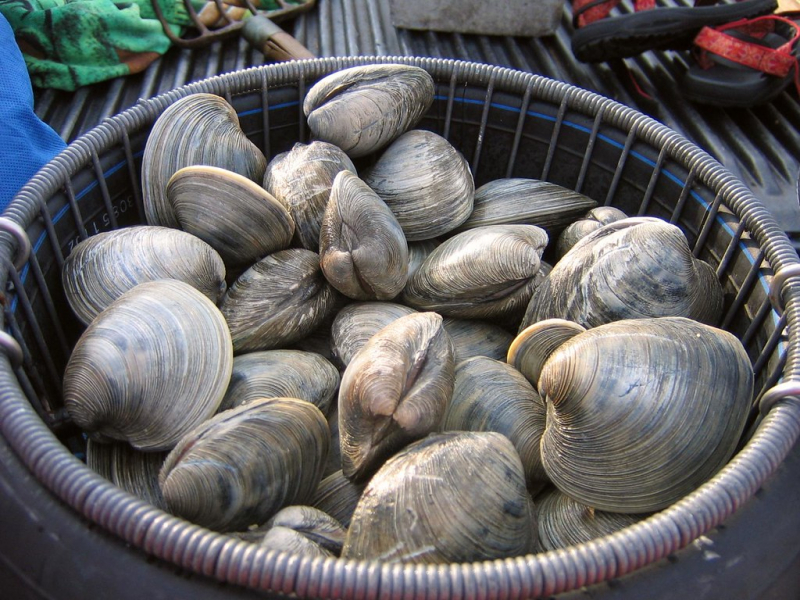
Photo by https://www.flickr.com/photos/coollibrarian/208316181/ Video by @DeepMarineScenes -
Ahoy there, fish fans! Get ready to dive into the deep and meet the Quillback Rockfish, a spiky resident of the rocky reefs who's as tough as nails and as colorful as a sunset. These underwater beauties play a vital role in keeping the ocean ecosystem healthy and vibrant.
Quillback Rockfish live in the cool, kelp-forested waters off the coast of North America, stretching from Alaska all the way down to California. Think crashing waves, towering kelp forests, and a kaleidoscope of marine life – that's their playground. They love clinging to rocky crevices and exploring the nooks and crannies of the reef, always on the lookout for a tasty snack.
The unique feature of Quillback Rockfish is their spiky appearance. Their namesake quills aren't just for show; they serve as a defense against predators. They've equipped themselves with built-in armor, making them a formidable presence in the underwater landscape.
Unlike some fish that lay thousands of eggs, Quillback Rockfish take a more quality over-quantity approach. They lay just a few hundred eggs but stick around and guard them until they hatch. Once the tiny rockfish fry are ready to go, they're on their own, learning to navigate the reef and find their snacks.
Conservation efforts focus on protecting the habitats of Quillback Rockfish, as they are susceptible to overfishing and habitat degradation. Preserving the rocky environments they call home ensures the continued thriving of these unique and spiky residents. It's like they've become ambassadors for the importance of maintaining the health of coastal ecosystems.
The Quillback Rockfish is the spiky sentinel of the Pacific Northwest's rocky underwater landscapes. With their stout bodies, quill-covered appearance, and crucial role in marine ecosystems, they embody the resilience and diversity of life beneath the waves.
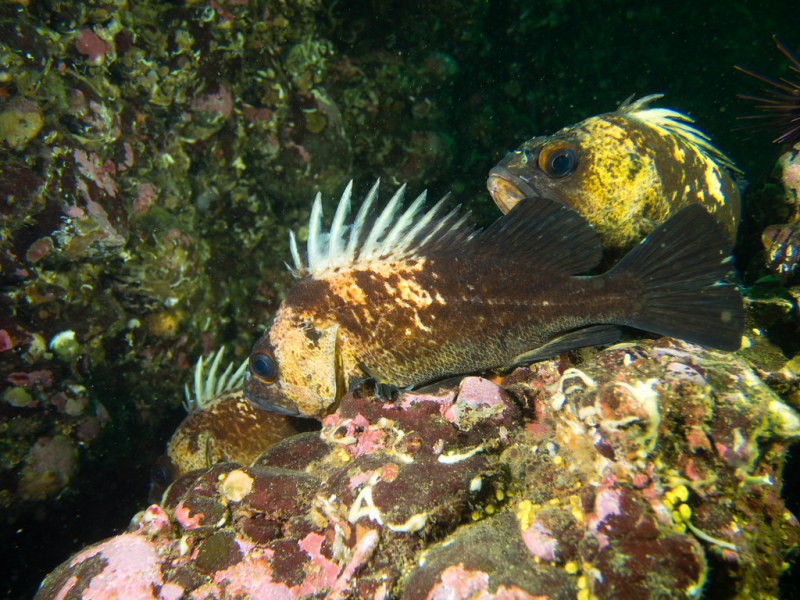
Photo by https://www.flickr.com/photos/genkigecko/17047838591/ Video by @PeelingLine

















